#craster
Text
I would like to think that the reason Waymar Royce avoided sleeping under Craster’s roof was more noble than selfish. After all, we have in the examples of Waymar’s (male) family members men who, while certainly not immune to the sort of personal and political ambitions common to Westerosi blue bloods, uphold a certain moral standard at the same time. If Ser Robar Royce sought out a place in Renly’s Rainbow Guard to win the sort of personal glory denied to nobly born second sons, and approached war with a lightness that disturbed Catelyn, he still prioritized honor enough to sacrifice himself so that two innocent women could escape the site of (and blame for) Renly’s murder. If Lord Yohn Royce sought and cultivated the favor and control of both the young Lord Arryn and his somewhat older heir presumptive, Bronze Yohn nevertheless exploded with fury at Lyn Corbray’s (staged) attempt to breach the ancient tradition of guest right during their conference at the Eyrie. Nor was Waymar himself personally bereft of a sense of honor, as demonstrated in his fatal determination to defend the Night’s Watch even against a supernatural enemy he could not have hoped to defeat.
So perhaps Ser Waymar, coming across Craster’s Keep on his very first command ranging, decided that he was not going to condone the same blind-eye allowance of Craster’s rape and slavery of his daughters and “wives” which other Night’s Watch officers allowed when they stopped over with Craster. How, perhaps Waymar might have thought, could he respect the chivalric charge to protect women and the innocent (as Robar Royce would do for Catelyn and Brienne) while sitting by as Craster verbally and physically abused the women and girls in his household? (To say nothing of Craster’s sacrifice of his sons, which admittedly Waymar does not seem to have known about.) Did Waymar, as Jon would in ACOK, decide that Craster was akin to an unjust bannerman, more fit to be hanged than to be trusted as even an uncertain ally? Consequently, did Waymar make the choice Jon would - to reject the obligations of guest right, that socio-political tradition which would in the future be so vigorously defended by his own father?
Of course it’s possible that this refusal was simply a reflection of Waymar’s aristocratic arrogance - that Ser Waymar found the midden heap of Craster’s Keep too humble and impoverished to house him, the knightly son of a great lord of the Vale and an officer of the Night’s Watch. Yet I feel like the more interesting reading is to view Waymar as a sort of proto or imperfect Jon Snow. Just as Ser Waymar was another privileged but extraneous aristocratic scion whose socio-political position virtually required that he pursue a career in the Night’s Watch - and as Waymar and Jon both hold to the fundamental mission of the Night’s Watch against the Others, with Jon perhaps eventually succeeding where Waymar (not for lack of trying) failed - so perhaps Waymar and Jon shared a feudal/chivalric disgust in the unjust actions of Craster.
93 notes
·
View notes
Note
How exactly do you imagine Craster became a ‘friend’ of the watch?
Craster offered his home in exchange for steel, since it's not something he can make on his own.
Thanks for the question, Anon.
SomethingLikeALawyer, Hand of the King
11 notes
·
View notes
Note
Maester Attewell,
In Storm of Swords, Craster constantly tells the Night's Watch that he only lets them rest under his roof because he is a "godly man". But, as we later find out, he worships the Others. So do the Others actually care about sacred hospitality? Do they hold roughly the same values as those held by the worshippers of the Old Gods, like opposition to kinslaying and the like? Or do you think that Craster only made that part up, or that he is misinterpreting the nature of the Others, or he is helping the Night's Watch because of mutual self interest and because he knows that they could just take what they want by force?
Thank you for your answer
Craster has no idea what the Others care or don't care about. If you go back and read my chapter essays that cover Jon and/or Sam's time at Craster's keep, I discuss how Craster's whole religion is a wild guess on his part - because the Others don't actually speak to Craster, they just show up looking for sacrifices, he doesn't know what they want, what the rules are, or anything.
He comes up with a bunch of guesses, but they're clearly not right, because they're starting from a fundamental misconception that there exists an actual pact between himself and the Others - in reality, no such pact exists.
The key detail is the suddenly empty sheepfold. As Gily explains to Jon Snow:
But Nella says it’s to be a boy…he gives the boys to the gods. Come the white cold, he does, and of late it comes more often. That’s why he starting giving them sheep, even though he has a taste for mutton. Only now the sheep’s gone too. Next it will be dogs, till…”
This is not a stable social contract or an honored pact between gods and worshippers - this is a completely alien force that shows up randomly and demands tribute, and it shows up more and more, and will always show up demanding more and more. And while Craster thought the "godly" path was to sacrifice his sons, they started showing up so often he ran out of sons to give them, so he had to give them sheep. And now they show up so often that hes run out of sheep.
And they will keep coming until he starts serving up his wives, and then they will come for him, because you cannot make a pact with the White Walkers; they are not interested in compromise or territory agreements or marriage alliances, they want to destroy all warm-blooded life.
59 notes
·
View notes
Text
Revisiting the Rat Cook, Part 2: Prince-and-Bacon Pie, and Pork Crackling
This is the second part of a series where I'm examining the symbols and themes present in the "Rat Cook" story, as relayed by Bran in ASOS Bran IV, and search reappearances of those elements throughout the rest of ASOIAF.
This is the first part, as well as the long version of my introduction.
"Revisiting the Rat Cook" is predicated on the understanding that GRRM's use of metadiegetic legends provide a "road map" of symbols and meaning, used in their abstract form, which we, as readers, can use to better understand the relationships between symbols, motifs, and themes as they reoccur throughout ASOAIF as a whole.
Among other things, the Rat Cook story is about a rat which eats rats, or a cook who serves kings; The Rat Cook story is about fathers and sons, about cannibalism, about trust, about vengeance, and about damning one's legacy.
This is likely going to be a 9-part series, but ideally almost all of these parts will be able to stand on their own. Each post will inform the next as I build my analysis, but hopefully each individual post is also interesting in its own right.
"Prince-and-Bacon Pie"
Last time, we talked about Wyman Manderly's wedding pies, and his favorite, lamprey pies.
In the original Rat Cook story, though, the Andal King is allegedly served a bacon pie. “Prince-and-bacon pie”, Bran calls it, and he repeats later that a “rasher of bacon” was cooked into the prince pie. The idea of pork served alongside human flesh is given repeat attention in regard to the pie, but it extends elsewhere into the story as well:
When the Rat Cook is punished, in turn, and becomes a cannibal rat eating his own kind, he is transformed into an insatiable rat “as huge as a sow”. Unusually large for a rat, but he is certainly no longer a man, although perhaps close enough, if you trust the moniker “long pork”.
This connection remains true for Lord Manderly’s Frey pies. When they are served in ADWD The Prince of Winterfell, they are introduced as being pork pies:
“…three great wedding pies, as wide across as wagon wheels, their flaky crusts stuffed to bursting with carrots, onions, turnips, parsnips, mushrooms, and chunks of seasoned pork swimming in a savory brown gravy.
Manderly’s pie is nearly identical to the one served by the Rat Cook, with carrots, onions, mushrooms, and, most importantly, down to pork as the main meat—which is to be expected, as Manderly has all but admitted to his influences.
In fact, though, the association of cannibalism, pork, and even pies comes as early as AGOT Jon IV, when the readers are introduced to the notion offhand while the Night’s Watch recruits mock Samwell Tarly:
“I saw him eat a pork pie," Toad said, smirking. "Do you think it was a brother?"
Three-Finger Hobb is certainly not serving Dickon to Samwell, but it contains all the same connections that the Rat Cook story relies on: between cannibalism and one’s own family, children baked into pork pies. The phrase “rasher of bacon” from the Rat Cook story appears in this same interaction about Sam, doubling down on the associations:
"You girls do as you please," Rast said, "but if Thorne sends me against Lady Piggy, I'm going to slice me off a rasher of bacon."
Again, this early instance of bullying, which might instead be framed as the brutal hierarchy of interpersonal domination—or we might say, brothers turning against brothers—is depicted using the same motifs as literal cannibalism. Is it Sam’s blood brother who is a pork pie, or is it Sam, called pork by the men who would become his black brothers? These are brothers turning against their own, and it is the imagined transformation of a man into a pig.
The recruits are joking here, but the comparison between slicing up a human and slicing up pork was brought up with a much darker tone only three chapters earlier, in AGOT Arya II:
Jeyne Poole had told Arya that he'd cut him up in so many pieces that they'd given him back to the butcher in a bag, and at first the poor man had thought it was a pig they'd slaughtered.
It’s dark irony for Micah, the butcher’s boy, to be returned to his father butchered like a pig. It also evokes our Rat Cook story again, with a dead son delivered to his father; like the Andal king, Micah’s father thinks—for a moment—that he’s being given pork. Also present again is the nature of transformation that this death creates: the prince becomes a pork pie, and the Rat Cook becomes as big as a “sow”, just as much as Micah becomes a slaughtered pig.
When the Night’s Watch arrives at Craster’s Keep in ACOK Jon III, Jon finds the similarity again, noting that a pig about to be slaughtered sounds eerily human:
Nearby, a small girl pulled carrots from a garden, naked in the rain, while two women tied a pig for slaughter. The animal's squeals were high and horrible, almost human in their distress.
Immediately later in the same chapter, Dolorous Edd makes a wry joke about cannibalism:
Best leave the wolf outside, he looks hungry enough to eat one of Craster's children. Well, truth be told, I'm hungry enough to eat one of Craster's children, so long as he was served hot.
Just like with the Night’s Watch recruits, this is a joke, but Edd’s line about eating one of Craster’s children transforms the earlier scene into a more chilling image: we were presented with the human-sounding tied pig appearing side-by-side in the same sentence with one of Craster’s small, naked children. With the addition of Edd’s words, both motifs appear alongside a story of eating children—just as in the Rat Cook story, where the Andal king eats his child-as-pork, and the Rat Cook-as-sow eats his own children as well.
Even more can be made of Edd’s jape, if we notice another minute detail: it’s also loaded that Edd uses “he” here to refer to Craster’s child… when Craster only keeps his daughters. Because Edd evokes sons here, Edd’s joke about eating a child calls special attention to the conspicuously missing sons from the scene. Might we expect, in the context of all this imagery, that these sons have been 'eaten' as well, even if not literally? We learn that these missing sons were sacrificed to the old gods later in the same chapter:
But the wildlings serve crueler gods than you or I. These boys are Craster's offerings. His prayers, if you will.
This is the clear meaning of the earlier association between the vulnerable child and the “almost human” pig, which is about to be slaughtered—or sacrificed—so that the keep could live, by way of eating it. It’s the same thing with Craster’s children, who are also, from his perspective, sacrificed so that his keep can live on, untroubled by the old gods.
Note here how all these motifs occur in tandem with each other: pigs as sacrifice to become food, eating children, sacrificed sons, deference (or lack thereof) to the old gods (and, importantly, their laws). The Rat Cook, in retribution, is forced to eat his children, for he forced the Andal King to do the same.
In both scenarios, the gods seemingly ‘demand’ that a father sacrifice his children; the fact that these are sons for Craster deepens the symbolic meaning, as it did with Walder Frey and the Freys in the last part: it is the death of one’s legacy by way of one’s lineage. Only sons bear the family name.
This is the paradox, the 'doom' that Craster, like the doomed characters in "The Rat Cook", is living out. From his perspective, he sacrifices his sons for the same reason he slaughters the pigs: to ensure his keep's survival. They need to eat, and they need to be untroubled by curses. But that sacrifice is Craster's curse, for even as he ensures his short-term survival, he damns his legacy. Craster may have children, but his keep has no future. Every one of his daughters, rather than become their own generation, perversely returns to reenact the role of their mother’s generation as Craster weds her; his keep, as its own patriarchal entity, is stagnant, and will die with him.
"Pork Crackling"
Regarding the equivalence of eating one’s family as an extension of eating one’s legacy, agency, or even one’s self, bear with me into an interesting digression about Victarion:
In ADWD The Iron Suitor, Victarion understands that his role as captain is both inextricably tied to his physical person, and yet is also an idea, separate from him as a mortal man. Referring to his rotting hand, he thinks to himself:
This was not something that his crew could see. They were half a world away from home, too far to let them see that their iron captain had begun to rust.
His mortality—the mortification of his injured hand—would ruin the effect of his role as captain, a higher status which the Ironborn consider to be a “king aboard his own ship”. Victarion may not be socially permitted to be so incapacitated while captain, but he also understands that if he keeps his captain identity separate from his mortal form—that is, if he can lie about the severity of his injury, keeping the state of his body hidden while playing the role of captain—he can maintain his identity as “the iron captain”.
The role of 'captain', and even more so, the arm that is required to be a warrior, is so intricately tied to Victarion’s warrior identity, and therefore to his sense of self, that Victarion refurses to allow the maester to cut off his arm to save the rest of his body. Again, his identity is greater than his mortality.
Yet, when Moqorro suddenly arrives, and Victarion is faced with an alternative, he is willing to sacrifice all else: to stray from the Drowned God towards R'hllor, to put his body into the hands of a “sorcerer” that he just met—all to pursue the ideal of his legacy as captain, divested from his person. And so Victarion, by beginning to sacrificing so much cultural baggage which he believed was part of himself, gets to keep his arm and his captainhood—and what does this arm look like?
Victarion offers this sickening description in ADWD Victarion I:
The arm the priest had healed was hideous to look upon, pork crackling from elbow to fingertips.
It’s a rare case where someone is able to look at their own body and make the gruesome comparison between their own flesh and pork as food, and this moment is Victarion’s reward. Like the Rat Cook who became a rat "huge as a sow", like Micah the butcher's boy who became a butchered pig, Victarion's arm—which was so much his legacy, his identity, that he would not let the maester remove it, so much a symbol of his personhood and his power that he would stray from the Drowned God to get it back—has become pork crackling.
- - -
Speaking of pork crackling, and returning to Craster's Keep...
When they burn the body of a fallen Night’s Watchman in ASOS Samwell II, Sam finds that it smells so much like pork that he is involuntarily hungry:
The worst thing was the smell, though. If it had been a foul unpleasant smell he might have stood it, but his burning brother smelled so much like roast pork that Sam's mouth began to water, and that was so horrible that as soon as the bird squawked "Ended" he ran behind the hall to throw up in the ditch.
Yet again, Dolorous Edd appears immediately afterward to bring the cannibalistic overtones to the forefront. Again, Edd makes the comparison between eating pork and eating human flesh, like in the Rat Cook story, and with eating one’s family, as with his own jape a book earlier, as with Rast mocking Sam in AGOT, as with the Freys eating their kin in ADWD. They may not be tied by blood, but Edd jokes about eating his brothers all the same:
"Never knew Bannen could smell so good." Edd's tone was as morose as ever. "I had half a mind to carve a slice off him. If we had some applesauce, I might have done it. Pork's always best with applesauce, I find." … "You best not die, Sam, or I fear I might succumb. There's bound to be more crackling on you than Bannen ever had, and I never could resist a bit of crackling.”
If Sam were to die, Edd suggests, he too would become pork crackling. I wonder if that says anything about Victarion's own fate... but I'm talking about Sam for now.
The even more important part of Sam’s experience here is Sam's knowledge that it is wrong, sickening, to eat human flesh—or, perhaps, to turn against his family, even his adopted family, as the two issues are conflated in these instances. Edd jokes about how delicious Bannen smells to make light of a dark, cruel truth: in these starving conditions, that might be true. Despite that suspicion, it is still firmly the wrong thing to do. Sam vomits even considering the thought.
When it comes to the Rat Cook story, though, that knowledge does not spare the Andal King any more than the Rat Cook; both, ultimately, are forced into the position of cannibalism, which makes it all the more tragic: to know the difference between right and wrong, but perhaps not to know which you are choosing. Did Victarion make the right choice turning his arm to pork to stay the "Iron Captain" he wanted to be? Did Craster make the right choice leaving his sons to die so that he could live untroubled? Do they even know?
As for the Andal King, he didn't even understand the choice in front of him; he was placed into that position by the Rat Cook—because of the violation of guest right, that significant law of the Old Gods.
Guest right is a social contract, the type that is necessary to maintain social stability. To keep interpersonal relationships, to build a community—or a kingdom—a person must be able to trust their neighbor. Practically, a guest must be able to trust that they will not be poisoned with food, in the same way that a host must be able to trust that their guest will not turn their cloak and slaughter them under their own roof. In other words, both parties must be able to trust that the social conditions of peace will be upheld.
The fact that this story of the Rat Cook concerns a power dynamic as well—between the lowly cook and the Andal King—expands the metaphor into one that describes feudalism as a whole… but I’ll expand that idea in the subsequent parts to come.
For now, consider this: that the Andal King, like Sam with Bannen’s delicious-smelling corpse, might have known the difference between right and wrong, but it may have made no difference as to what he actually did: he still ate his own son.
But what of the Andal King's own crime? Who started it? The Rat Cook broke the ancient social contract of trust called “guest right” to punish the King… but for the Rat Cook to be deserving of vengeance, the Andal King must have broken a social contract as well, perhaps a social contract regarding the position of power that a King has over a cook. The King must have broken that contract first, even before the story of "The Rat Cook" picks up.
But that will be further discussed in parts to come. Next part we’ll talk more about trust in particular, finally taking look at Coldhands attempting to feed Bran a “sow”, visiting Arya in the House of Black and White, and looking at Quentyn making a deal Meereen.
13 notes
·
View notes
Text
"I haven't seen Benjen Stark in three years. Haven't missed him. Always treated me like scum." Guys please I would pay you money to show me Benjen and Craster being forced to put up with each other for even a single night.
You just know it was non stop snark city coming from Benjen to the point even Crasters wives were probably laughing at him.
11 notes
·
View notes
Note
What do you think the conflict between Craster and Rattleshirt was about?
Most likely Rattleshirt wanted to make off with Craster's livestock and women. Honestly though, Craster's status as an incestuous kinslayer is enough to make anyone hate him, even someone as lowly as Rattleshirt.
Thanks for the question, anon
7 notes
·
View notes
Text
See the thing is that Aegon IV is unequivocally a bad dad. Okay. He sucks. Among Targ King Dads I probably rank him higher than Viserys I and very very close behind Jaehaerys I. (He’s slightly below Jae because him being shitty is actually pretty non-discriminatory vs the majority of Jae’s crimes were against his blood family members). He sucks!! Literally openly despised Daeron and deliberately enabled a succession crisis. Possibly had sex with his own daughter! However. CRASTER.
#CRASTER man. fucko’s got JAE beat with me#bad dad tournament#aegon iv targaryen#craster#jaehaerys i targaryen
9 notes
·
View notes
Text

United Kingdom, Craster, Northumberland
28 notes
·
View notes
Text
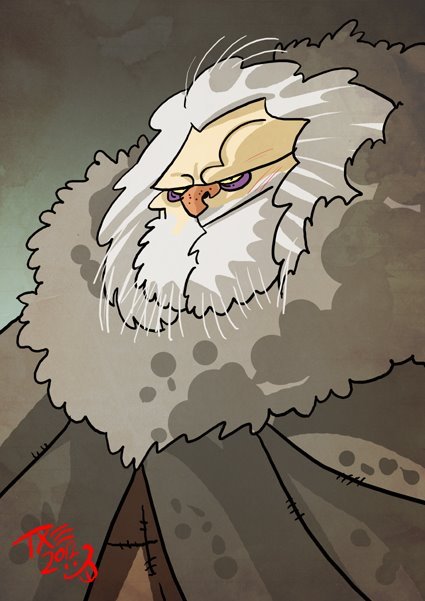
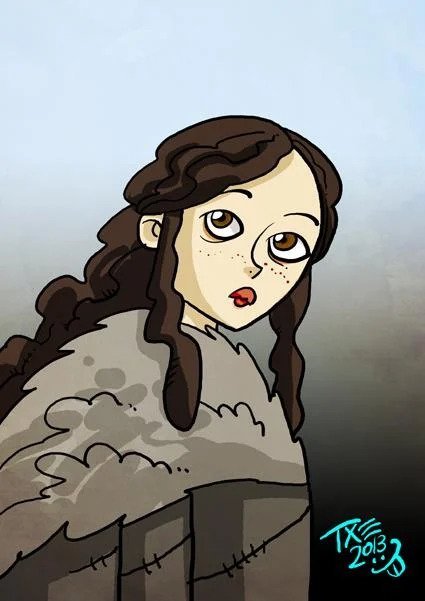
#asoiaf art#art reblog#themico#not mine#craster#gilly#free folk#crasters keep#a clash of kings#a storm of swords#valyrian scrolls art
20 notes
·
View notes
Text
Northumberland Coast November Road Trip
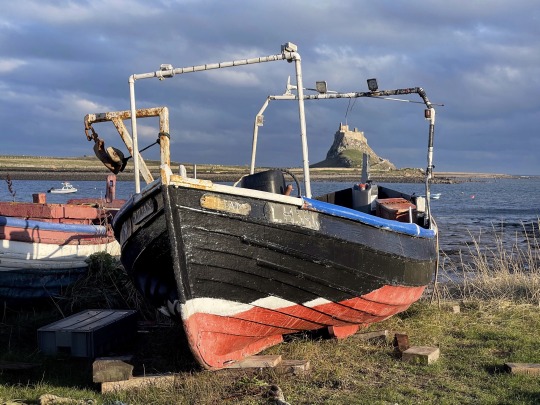
England in November is a season of shorter days and falling temperatures. We expected the weather for our Northumberland coastal road trip to be mixed, and that’s exactly what we got. At times, the conditions were challenging due to considerable periods of drenching rain and temperatures that barely reached double figures.
A road trip along Northumberland's beautiful coast, at any time of year, from Amble in the south to Berwick-upon-Tweed on the northern borders of Scotland, displays some of Britain's finest beaches and spectacular views. An Area of Outstanding Natural Beauty (AONB), this stretch of England’s most northern county is home to expansive stretches of stunning shoreline, wind-swept sand dunes, historic ruins, and charming fishing communities.
The November sun rises just before 8 am and sets about 4 pm, so I didn't have to worry about setting my alarm too early. Since there are less visitors in the area at this time of year, the coastal scenery can be explored without the crowds, having miles of beautiful Northumberland beaches virtually all to ourselves. We found some businesses and attractions understandingly closed or operating less frequently for the winter season. Finding tables at restaurants was easy whereas in the summer months booking ahead would be a necessity.
Our journey spanned five days, which gave us plenty of opportunities to leisurely explore the different places we visited, sometimes even retuning the next day, and time to shelter from the harshest weather conditions. The trip could easily be completed in half the time, especially within the longer days of summer.
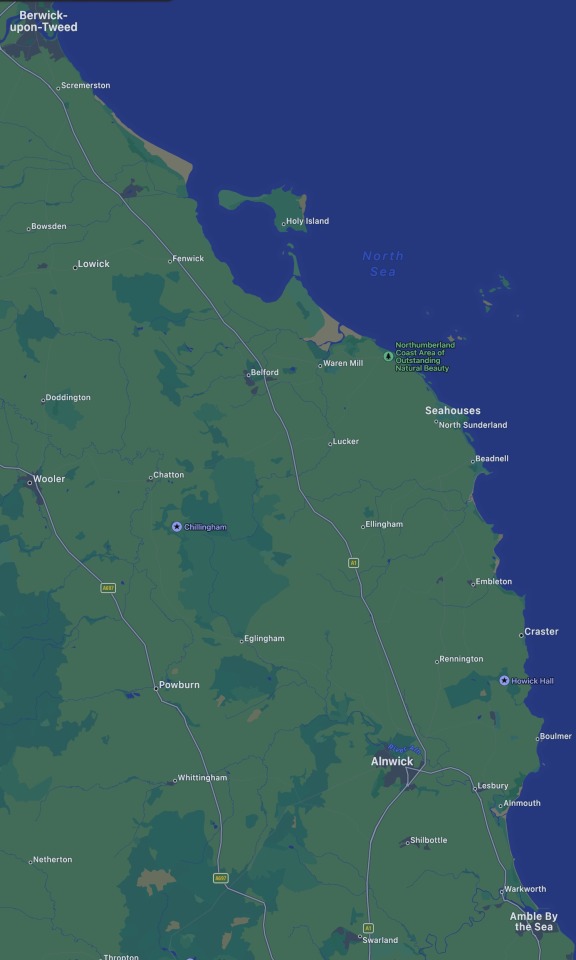
Northumberland map
Highlights of Our Northumberland Coast Road Trip
Amble
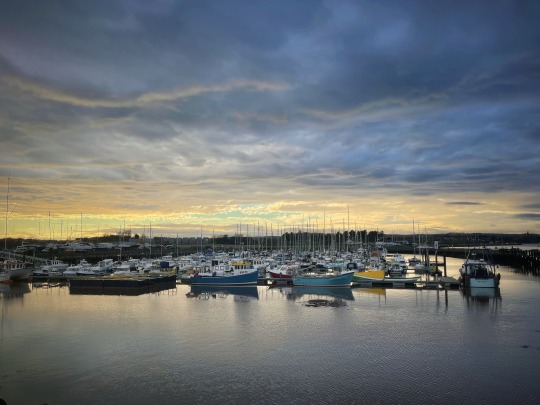
We begin our tour in Amble, known as "The Friendliest Port". A quaint harbour town at the mouth of the River Coquet that can be considered as the southern gateway to the Northumberland Coast. Harbourside seafood restaurants, brightly coloured beach huts, independent retail pods, and a sizable pier can be found in this increasingly popular town.

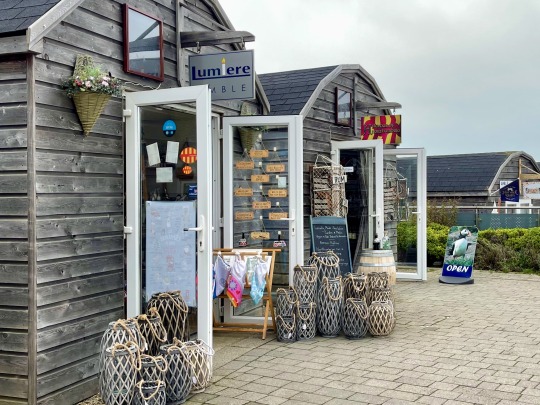
Amble still functions as a working port and has a small fishing fleet. A 250 berth Marina, situated on the banks of the River Coquet, offers a range of boat yard services. Boat trips operate in the spring-time to view wildlife, notably puffins and roseate terns, on Coquet Island. Sitting a mile off the coast and crammed with birdlife for half the year, the island is a Royal Society for the Protection of Birds (RSPB) managed nature reserve. Boat landings are not permitted and only RSPB wardens are allowed onto the island.


Amble gained the nickname 'the friendliest port' when on 3rd July 1935, the local Council sent the RMS Mauretania a telegram on it's last voyage to the the wreckers yard in Rosyth. 'Still the finest ship on the seas'. To which Mauretania replied with, "Thank you to the last and kindliest port."
Craster
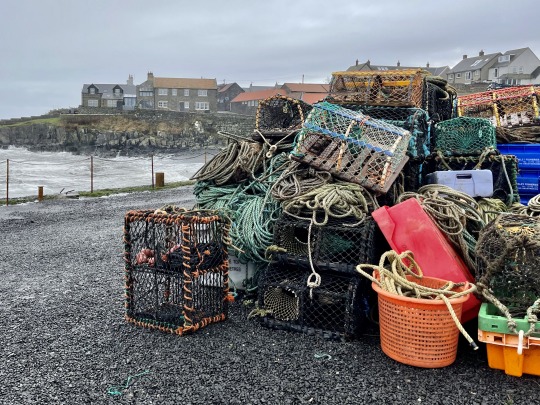
Moving approximately 15 miles north, we reach Craster, a remote coastal haven set amongst rugged rocks, dramatic coastline and beautiful countryside.


Craster has a small harbour shielded from the wind-whipped North Sea by the guarding embrace of two solid piers. These concrete harbour walls were being put to the test as we arrived. As enormous wave swells pummelled the sea defences with amazing force, we were reminded that no matter how picturesque this coastline may be, the sea can nevertheless be brutal and unforgiving,

As soon as we stepped foot in the village, we were aware of the enticing smell from the L. Robson & Sons fish smokeries. Craster has a reputation for some of the most delicious oak-smoked kippers in the country. Fish is still being cured in the ancient smokehouses, which date back more than 130 years, by this fourth-generation family business.

Craster more than makes up for its lack of beaches with a breathtaking, volcanically formed, rocky shoreline. A relatively easy, one mile walk along the headland provides breathtaking sea views as you approach the imposing ruin of Dunstanburgh Castle. One of the most atmospheric and inspiring castles in England, Dunstanburgh Castle was built in the 14th century.
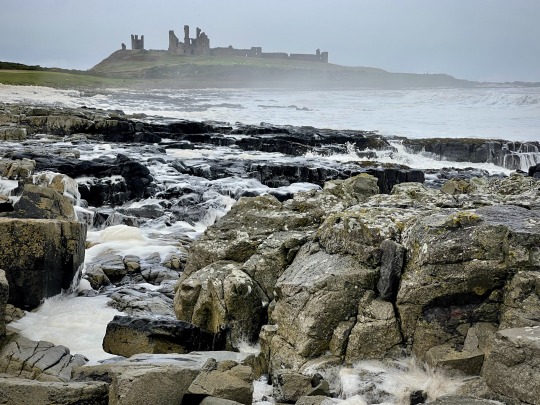
With over 700 sites—more than any other county in England, you will see plenty of castles on your journey up the Northumberland coastal route. This is due to the rather violent past with neighbouring Scotland to the north.
Seahouses

Further up the coast, the bustling market town of Seahouses offers everything you may want for a conventional coastal getaway. A variety of shops, restaurants, pubs, ice cream shops, and fish & chip eateries can be found in addition to fantastic sea views.
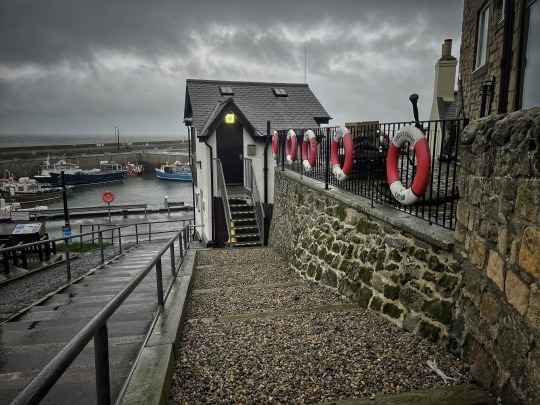
I have a fondness for Seahouses that stretches back over a decade or more. Known to many as ‘The entryway to the Farne Islands’ which are located two to three miles offshore. I’ve made the crossing over to the islands many times to photograph nesting sea birds. As well as being the most famous Sea Bird Sanctuary in the British Isles, the islands are also home to a large colony of Grey Seals. Birds that frequent these islands for nesting include Puffins and several breeds of Terns. Boats depart daily from the busy, colourful harbour.


There are beautiful beaches to the north and south of Seahouses, with the northernmost one being the most popular. Bamburgh Castle provides a magnificent backdrop to this expansive sandy beach which is bordered by grassy sand dunes.

Avian Flu
The worst bird flu outbreak to ever affect the UK has occurred during 2022, and experts have cautioned that the infection rate could increase even further throughout the winter of 2022-2023. The outbreak has had a huge negative impact on agriculture and the environment, killing 97 million birds worldwide (3.8 million in the UK). In response, the Farne Islands have been closed to visitors over the breeding season, as officials attempted to stem the spread of the infections. There is still a worrying battle ahead to rid our shores of this rampant killer disease.
Bamburgh
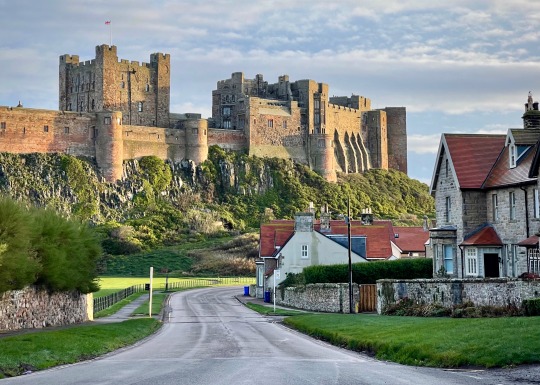
Bamburgh is the next-door neighbour to the community of Seahouses. A picture-postcard village, with English tea rooms, stone cottages, gift shops, eateries and B&Bs. The magnificent, 1,400-year-old Bamburgh Castle is seen before you even get to Bamburgh, majestically rising from the dunes system that fringes the beach, it literally is the stuff of legends.


The castle commands sweeping views of a 2.5-kilometer long, immaculate sandy beach with the Farne Islands, Holy Island, and Lindisfarne seen in the distance. Due to its lofty position, Bamburgh Castle is a beautiful subject for photos when shot from the beach.
Holy Island

Any visit to the Holy Island of Lindisfarne begins and ends with the vagaries of the tide. The island is cut off from the mainland twice a day during high tide when the causeway that connects the mainland to the island is submerged.
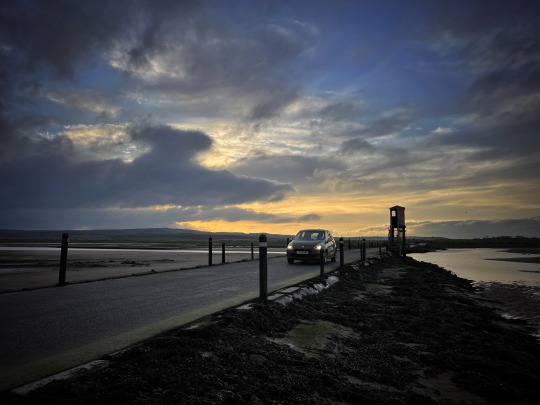
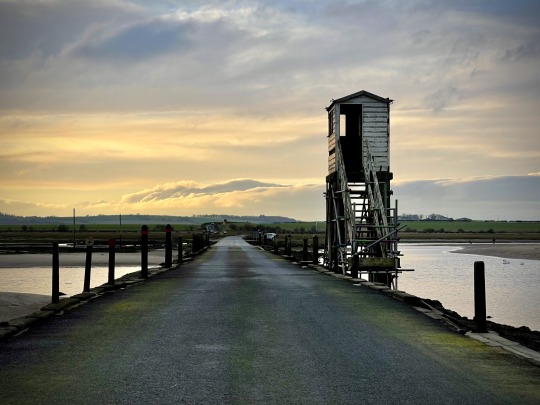
Crossing Holy Island’s causeway is a great experience, beautiful and sometimes eerie. The Road is approx 3 miles long and takes about 10 minutes to drive. Close to the start of the causeway is the famous refuge shelter for anyone unlucky enough that gets caught out by the tide. If you are unfamiliar with the causeway and the workings of the tides, it is best to educate yourself first, so long as you plan your visit for the right times, there is really nothing difficult to the crossing. I double-checked the crossing times before planning our trip.

Holy Island is steeped in history with spectacular coastal scenery. Whether you're interested in history, religion, walking, birdwatching, nature, or beaches, or like me in photography - Holy Island boasts a variety of attractions and activities. I think that it’s safe to say that most visitors are attracted by the extensive ruins of a 12th-century priory church and the associated monastic buildings. The equally famous Lindisfarne Castle is the other main visitor attraction.

Local boats moor iIn Holy Island Harbour, known as The Ouse. The legendary upside-down boats on a muddy area next to the beach are old herring boats that have been converted into fishermen's sheds.

Lindisfarne Castle dates back to the middle of the sixteenth century and was first used as a garrison. The castle, which is positioned atop the volcanic rock formation known as Beblowe Craig and is one of the Island's most recognisable and appealing sights, can be seen for miles in all directions. The castle we see today was constructed by renowned architect Edwin Lutyens beginning in 1903 and is an amazing blend of a Tudor artillery fort and an Edwardian country home.

Reconnecting with some of our favourite places along the Northumberland Coast has been a wonderful experience. Who wouldn't be captivated by this special place? It's every bit the wild coast you'd want for photography inspiration.
All images © Adrian McGarry
www.adrianmcgarry.com
#Road trip#northumberland#northumberland coast#coast#coastal photography#coastline#amble#craster#Seahouses#bamburgh#dunstanburgh#lindisfarne#holy island#sea#ocean#lighthouse#castle
9 notes
·
View notes
Note
What do you think happened to the remaining women at Craster’s keep?
Their prospects don't look good. Nine mutineers remained at Craster's Keep after the mutiny. They may be forced to serve them. It's hard to say if the wives would plot a rebellion such as killing the men in their sleep. They outnumbered Craster nineteen to one, but Craster's cult-like psychological control kept his daughter-wives from ever raising a hand against him. I'm not blaming them. They are largely cut off from other people. Craster indoctrinated them to believe he is a godly man and their sacrifices to the cold gods (the Others) are their only source of safety in a hostile world. He has conditioned them to believe this is what freedom looks like and everywhere else lies the barbarity of slavery when clearly it's the opposite. Where else could they go? The NW may have a tenuous alliance with Craster, but his wives would never be welcomed at the Wall or allowed to go south. Why should they not expect to find more of the same depraved animals that terrorized them at the Wall? They also are rejected by other Free Folk for their incestuous breeding, which was nothing they chose of their own free will. They are cursed just for being born one of Craster's children. No clan will take them in. There is also the problem of the Others' escalating presence and they are pretty much out of sons to keep their gods appeased. With Craster dead and the center of their world collapsed, it's hard to say how they will process this new reality. I'm not saying they blissfully drank the kool-aid because none of them seem happy with their lot. It's just that the outside world seems so much crueler and dangerously unpredictable compared to the prison they were accustomed to. I don't see how they have any good options moving forward, and I wouldn't expect them to survive much longer no matter what they did. :(
#valyrianscrolls#Craster#craster's wives#the mutiny at Craster's keep#the night's watch#the others#the cold gods#asoiaf speculation
10 notes
·
View notes
Text
Better quality artworks of the Night's Watch Heroes 2 box of the tabletop miniatures game.
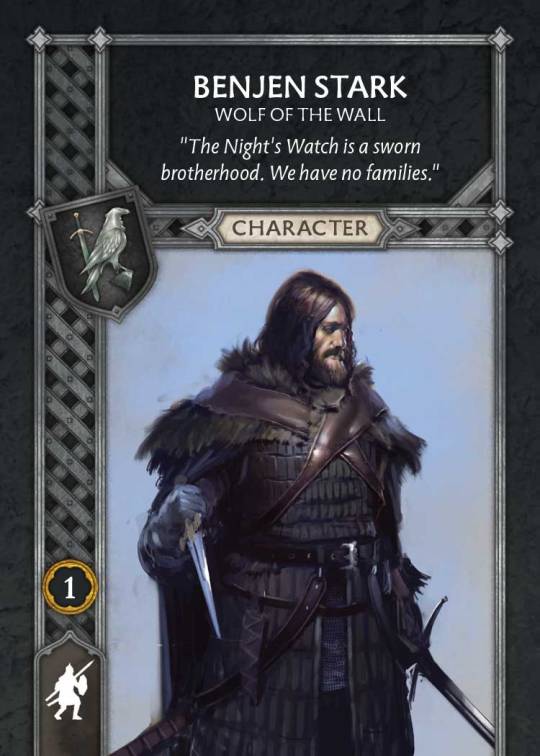

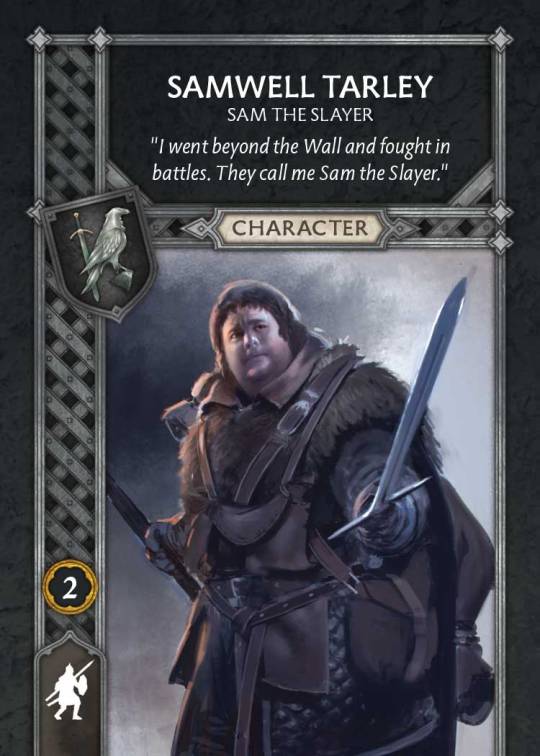


#night's watch#benjen stark#samwell tarly#coldhands#gilly#craster#a song of ice and fire#game of thrones#wargames
6 notes
·
View notes
Text





Today's trip out at Crasters walk round the town at the harbour and then onto the walk along the coast to the castle
1 note
·
View note
Text
ASOIAF terrible fathers bracket FINAL FOUR: Jaehaerys Targaryen vs. Craster
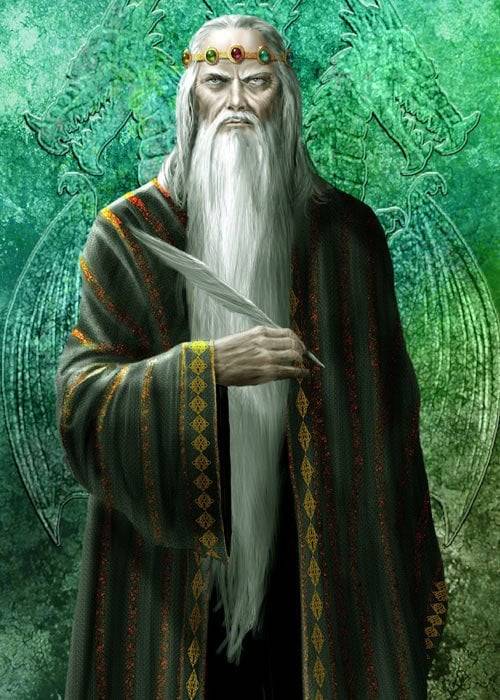

Jaehaerys: I fully recognize this is probably my last chance to deliver unto y’all my anti-jaehaerys sermon, so I am gonna leave it all on the fucking field for you people today. Between passing over daenerys for his son against his wife’s wishes, making his wife carry 13 of his children against her wishes, forcing his terrified likely cognitively disabled 13 year old daughter to get married against her will (resulting in her violent death), exiling his 16 year old daughter to another continent for having premarital sex after holding her down and making her watch as he chopped her boyfriend in half with a sword and then saying it’s fine she had to resort to sex work because she was always a whore anyways, forcing his other 16 year old daughter to get married to an old man thousands of miles away from her home (resulting in her death), locking his final teenage daughter away from public view during her pregnancy and miscarriage (resulting in her suicide), making his 12 year old granddaughter marry his sixteen year old grandson and start trying for kids (resulting in her death) and passing over Rhaenys for Viserys (resulting in the dance of the dragons, which caused the downfall of house targaryen), Jaehaerys was a MENACE to each and every woman in his life, way too personally invested in his teen daughters’ sex lives in a way that does carry sinister implications, and ultimately laid the seeds for the cataclysm that would swallow his whole family forever. Looked at his daughters and all he could see was a wife (whether for himself, his sons, or another old man he needed to gain power from) and a future incubator he would exchange the life of for a grandson. see you in hell
craster: marries his daughters and sacrifices his sons to the white walkers
#asoiaf#terrible dad bracket#i need to make it clear that jaehaerys DOES basically want to marry his daughters in terms of keeping them in his personal control forever#craster is just more literal about it
427 notes
·
View notes
Text
Cersei has to face the younger and more beautiful queen/valonquar prophecy because the gods hate to see a girlboss winning
#cersei lannister#asoiaf memes#literally though what like there are 8000 way more evil people in the series @ the powers that be in asoiaf deal with them first#like take out craster first tf then maybe we can get to cersei#shes not even top 10 worst people in westeros at this very moment#wonder if eurons pissed cersei got a 'no man of woman born can kill me' moment but hes there about to do blood magic#on the reaches doorstep and no one cares
157 notes
·
View notes
Note
for the colour prompt: lady stowe in dance macabre or null moon?

As beautiful as the first frost — and as cold.
#em draws stuff#the flight of the heron#the gleam in the north#lady stowe#these were both excellent palettes for her but I had to go with dance macabre because of the red and how well it worked for her Parrot#I am So afraid of her parrot by the way. wracks me with distress for reasons mysterious.#and I did not have a reference picture to work off for That otherwise it would be Scarier-Looking#the rest of it is based on nathaniel dance-holland's 1762 portrait of olive craster#which I like for its Squirrel and its Wild amounts of delicately rendered lace#which I was going to add but I found I did not actually like the look of it in my own iteration#Anyway. She :]
23 notes
·
View notes